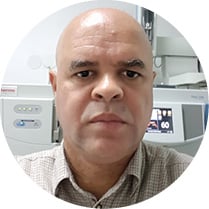Advanced Sorbents for Separation of Metal Ions
A special issue of Metals (ISSN 2075-4701). This special issue belongs to the section "Extractive Metallurgy".
Deadline for manuscript submissions: 30 June 2024 | Viewed by 20043
Special Issue Editor
Interests: environmental chemistry; analytical chemistry; chemometrics; environmental radioactivity; chromatographic techniques; environmental pollution; physical chemistry
Special Issues, Collections and Topics in MDPI journals
Special Issue Information
Dear Colleagues,
The rapid technological development that we have witnessed in recent years has caused an increase in demand for metals. An essential step in the production of metals is their separation from aqueous solutions obtained from leaching ore or recycling waste. Adsorption is considered an effective technique for the recovery or removal of metals from aqueous media. It offers excellent workability in process operation and design, and sorbent can be reused after proper regeneration. Many traditional sorbents, including inorganic clays/zeolites, activated carbon, and polymeric resins, have been used for metal ion separation. Recently, advanced sorbents, such as modified natural inorganic/organic materials, modified carbons/biochar, agricultural waste (biosorbent), metal–organic frameworks, synthesized polymers, magnetic sorbents, hydrogels, and nanosorbents, were successfully applied in the separation of metals.
In this Special Issue in Metals, we welcome reviews and articles in the areas of separation of metal ions, including new and modified sorbent preparation, characterization and applications, mechanism elucidation, and theoretical calculation.
This issue will be focused but not limited to advances in:
- Synthesis and characterization of advanced sorbent materials;
- Physical and chemical modifications and functionalization of sorbents;
- Theoretical considerations of interactions between dissolved metals and solid surfaces;
- Adsorption mechanism of metal cations, metal oxyanions, and metal complexes;
- Process design in static and flow systems;
- Automatization of the adsorption processes;
- Miniaturization of adsorption and solid-phase extraction of metals;
- Novel applications of sorbents for metal ion separation.
This open access issue aims to outline the current state of the art in the area of separation of metals by modern sorbents.
Prof. Dr. Antonije Onjia
Guest Editor
Manuscript Submission Information
Manuscripts should be submitted online at www.mdpi.com by registering and logging in to this website. Once you are registered, click here to go to the submission form. Manuscripts can be submitted until the deadline. All submissions that pass pre-check are peer-reviewed. Accepted papers will be published continuously in the journal (as soon as accepted) and will be listed together on the special issue website. Research articles, review articles as well as short communications are invited. For planned papers, a title and short abstract (about 100 words) can be sent to the Editorial Office for announcement on this website.
Submitted manuscripts should not have been published previously, nor be under consideration for publication elsewhere (except conference proceedings papers). All manuscripts are thoroughly refereed through a single-blind peer-review process. A guide for authors and other relevant information for submission of manuscripts is available on the Instructions for Authors page. Metals is an international peer-reviewed open access monthly journal published by MDPI.
Please visit the Instructions for Authors page before submitting a manuscript. The Article Processing Charge (APC) for publication in this open access journal is 2600 CHF (Swiss Francs). Submitted papers should be well formatted and use good English. Authors may use MDPI's English editing service prior to publication or during author revisions.
Keywords
- Adsorption
- Cations
- Oxyanions
- Removal
- Leaching
- Hydrometallurgy





